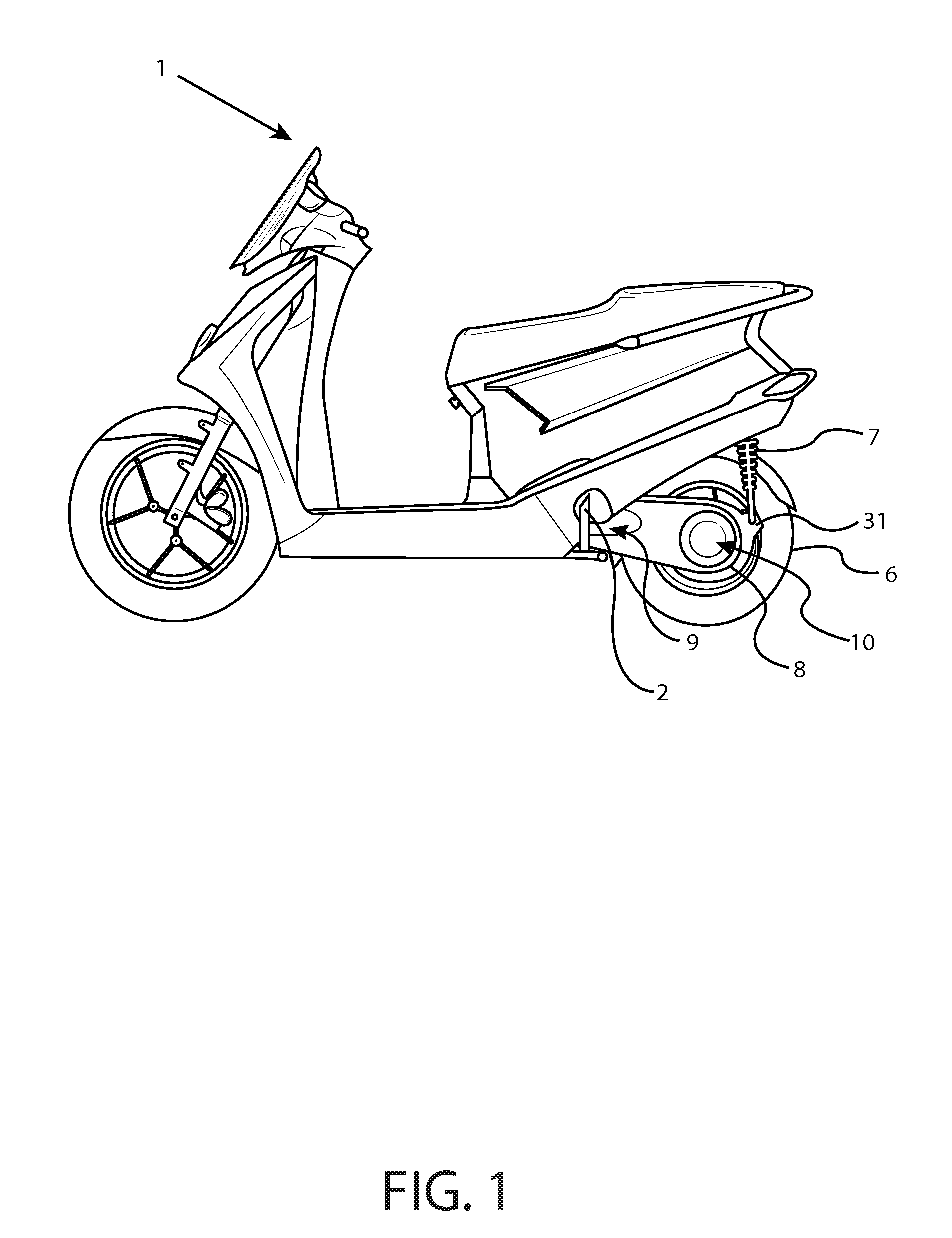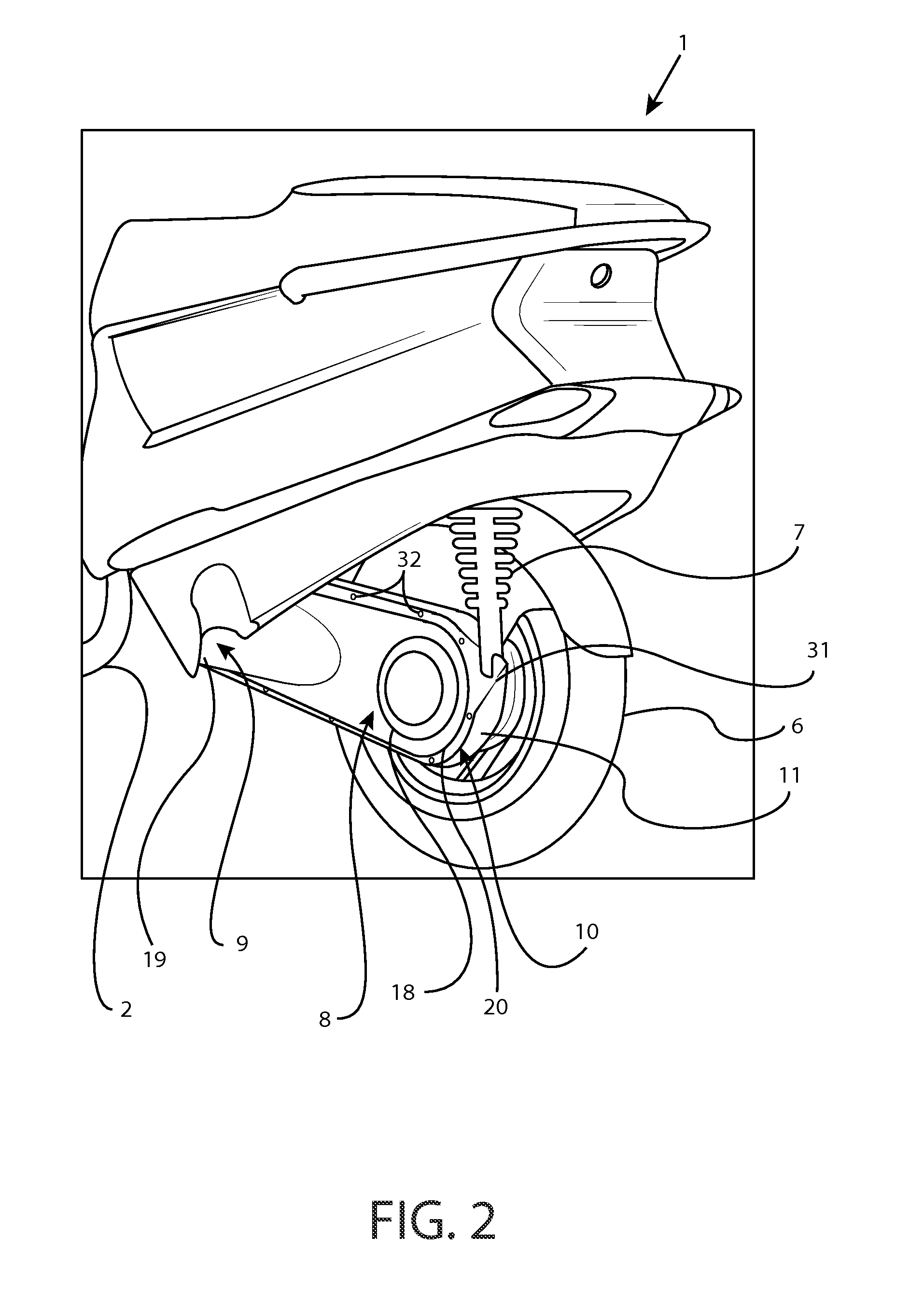Lightweight integrated rear suspension and drive enclosure for a ridden motorized vehicle
a technology for ridden motor vehicles and rear suspensions, which is applied in the direction of jet propulsion mounting, cycle equipment, cycle equipment, etc., can solve the problems of increasing road noise, high manufacturing costs, and heavy weight of the motor with the suspension, so as to reduce the unsprung weight of the ridden vehicle, reduce the complexity of manufacture, and reduce the cost of manufacture.
- Summary
- Abstract
- Description
- Claims
- Application Information
AI Technical Summary
Benefits of technology
Problems solved by technology
Method used
Image
Examples
Embodiment Construction
[0029]Referring to FIGS. 1 and 2, disclosed is a ridden motorized vehicle 1 having a monocoque drive enclosure 8. The monocoque drive enclosure having a first end 9 and a second end 10 extending from the main chassis frame 2 of the motorized vehicle 1 to the rear wheel 6 of the motorized vehicle 1. A rear shock absorber 7 may be attached to a shock absorber mount 31 at the second end 10 of the monocoque drive enclosure 8, with the opposite end of the shock absorber mounted to the main chassis frame 2. The shock absorber mount 31 may be integrated into the monocoque drive enclosure 8 or may be separate and attached to the monocoque drive enclosure 8. The shock absorber 7 may be attached to the second end 10 of the drive enclosure 8, as shown in the Figures. Alternatively, the shock absorber 7 may be attached to the drive enclosure 8 at the first end 9 or at some other position along the drive enclosure 8.
[0030]In some embodiments, the shock absorber 7 may be attached to the rear whee...
PUM
 Login to View More
Login to View More Abstract
Description
Claims
Application Information
 Login to View More
Login to View More - R&D
- Intellectual Property
- Life Sciences
- Materials
- Tech Scout
- Unparalleled Data Quality
- Higher Quality Content
- 60% Fewer Hallucinations
Browse by: Latest US Patents, China's latest patents, Technical Efficacy Thesaurus, Application Domain, Technology Topic, Popular Technical Reports.
© 2025 PatSnap. All rights reserved.Legal|Privacy policy|Modern Slavery Act Transparency Statement|Sitemap|About US| Contact US: help@patsnap.com



